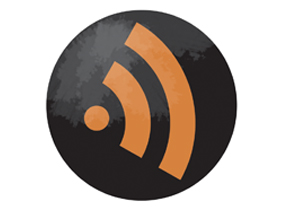Last term, having received a request from the campus Disability Services Office, I asked my lecture class of 700 students for volunteers to take notes. After the lecture, I opened an email from a student offering to share his lecture recordings. Seated somewhere near the front of the auditorium, calmly and carefully capturing and redistributing my lectures without permission, the student had generously and unselfconsciously offered up his digital lecture bootlegs. I was dumbstruck, and not for the first time, by this active, selfdirected, peer-to-peer production of grassroots learning objects. My next thought was, I can do him one better. I can and should produce high-quality lecture podcasts and publish them using iTunesU, so all students have this remedial support. And, if I’m being honest, so that I’d have the chance to edit some of those awkward um’s and ah’s, offhand quips, and asides. I became a podcasting prof, monitoring download numbers with some satisfaction—knowing it was a quality product. Soon after, I followed my students onto Facebook, where they had created a course group with four members, and was inspired to design a resource-rich page with which 1,500 students eventually engaged. Next, I wandered onto YouTube with lecture coursecasts, experimented with voice-enhanced digital flashcards, developed a smartphone app—in essence I digitalized, socialized, and mobilized my teaching by following my students’ high-tech first steps.
 There’s a torrent of research demonstrating the costs and benefits of using social, mobile, and digital technology enhancements to teach; yet it’s inconclusive whether these result in higher student outcomes. Of course, there are multiple bottom lines to consider. What’s undeniable is that even though digital divides exist, today’s students expect to see some technology used in their classes. It follows that we can expect increased engagement and higher student satisfaction when profs power-up. In my experience, exceedingly positive end-of-term student surveys and reviews in my ed-tech enhanced courses document a beneficial halo effect. I’m in good company. Surveys show that the vast majority of higher ed faculty in North America are blending digital technology into their courses in small and large ways, whether it be encouraging students to use mobile tools such as smartphones or laptops to meet learning objectives, finding ways to use social sites like Twitter or Diigo to enable collaboration, assigning blogging and online group work, or integrating multimedia content from YouTube to keep courses interesting and relevant. In fact, a survey of profs in 2011 about their social media use for professional purposes found over 90 per cent of respondents used these tools in class and for their personal career development. We’re long past the tipping point for teaching with technology.
There’s a torrent of research demonstrating the costs and benefits of using social, mobile, and digital technology enhancements to teach; yet it’s inconclusive whether these result in higher student outcomes. Of course, there are multiple bottom lines to consider. What’s undeniable is that even though digital divides exist, today’s students expect to see some technology used in their classes. It follows that we can expect increased engagement and higher student satisfaction when profs power-up. In my experience, exceedingly positive end-of-term student surveys and reviews in my ed-tech enhanced courses document a beneficial halo effect. I’m in good company. Surveys show that the vast majority of higher ed faculty in North America are blending digital technology into their courses in small and large ways, whether it be encouraging students to use mobile tools such as smartphones or laptops to meet learning objectives, finding ways to use social sites like Twitter or Diigo to enable collaboration, assigning blogging and online group work, or integrating multimedia content from YouTube to keep courses interesting and relevant. In fact, a survey of profs in 2011 about their social media use for professional purposes found over 90 per cent of respondents used these tools in class and for their personal career development. We’re long past the tipping point for teaching with technology.
Whether nudged by inventive students toting lecture-recording gadgets and frequenting note-sharing websites, or motivated by digital natives’ expectations for tech-heavy classes, or convinced by tech-forward peers demonstrating the benefits of connected teaching, the digitalization of the professoriate is well underway. And it’s not just about what goes on inside classrooms, online and off. Increasingly, faculty from across the disciplines are venturing into the realms of social, mobile, and Web 2.0 technologies to experiment with digital tools for research and professionalization. Online portfolios are multiplying. Professors from biology to classics, from business to film, are busy growing their technical fluency and digital literacy, often in a do-it-yourself fashion, while expanding their personal learning networks to share, debate, and troubleshoot all things ed-tech. Digital immigrants though we may be, the ranks of podcasting, facebooking, tweeting, webinaring, skyping and blogging scholars are expanding rapidly. The result is a series of productive disruptions to well-established traditions on campus, something The Chronicle of Higher Education refers to as the “unbundling of the university”.
When Stanford University offers massively open online courses (MOOCs) in science and engineering, in one case drawing over 150,000 participants, people take notice. When the Khan Academy wins significant Microsoft funding, posts 3,000 instructional videos online, and attracts massive traffic, stories proliferate about the future of self-directed, online, informal e-learning. When Apple announces the imminent death of the textbook, courtesy of much-cheaper iPad eBooks, the blogosphere starts to buzz about the future of publishing, the impact of bookless libraries, and the great textbook rip-off. These and other tech-fueled, Web-enabled, productive disruptions inspire and provoke debates about next-generation teaching and learning, scholarly publishing, and knowledge mobilization. Critics ask, what’s the value of having students attend a lecture in real time if essentially the same material is covered by world-renowned professors on professional-quality video courtesy of free services at TED-Ed or YouTube Education? Why require students to purchase on myclap.com and memorize textbook chapters when the world’s knowledge is just a Google search away? Why pay enormous fees to learn from faculty in an accredited university program, when MITx offers free online courseware with options for students to get peer-to-peer and professor feedback, assessment and earn branded certificates of achievement? What is the return on investment for students (and perhaps their parents) opting to earn their credentials at a bricks-and-mortar university when they could join the 30,000 others enrolled at the London School of Business and Finance in their Global MBA program—delivered online via a Facebook app?
 With the spread of educational resources online from grade school to high school to higher ed comes a set of new expectations regarding faculty roles, responsibilities, and research. To this end, scholars and skeptics alike seem to agree that in the age of the social Web, we must find ways to make knowledge more open, accessible, and agile. Self-published eBooks and academic blogs, open access journals, and new mechanisms for measuring and assessing scholarly impact that account for online influence, are examples of a trend toward new modes of research creation, communication, and collaboration. Making scholarly production more publicly accessible matters, especially when more learning takes place outside the classroom infrastructure than ever before, according to the New Media Consortium’s 2012 Horizon Project retreat, where 100 distinguished intellectuals from around the world gathered to discuss the rapidly evolving educational ecosystem. Horizon Project participants pointed to what they called a key mega-trend; namely, openness—the need for scholars to produce more open content, open data, and credible open access research from universities seeking to add value to a global culture of information abundance and to contribute to the development of new media literacies.
With the spread of educational resources online from grade school to high school to higher ed comes a set of new expectations regarding faculty roles, responsibilities, and research. To this end, scholars and skeptics alike seem to agree that in the age of the social Web, we must find ways to make knowledge more open, accessible, and agile. Self-published eBooks and academic blogs, open access journals, and new mechanisms for measuring and assessing scholarly impact that account for online influence, are examples of a trend toward new modes of research creation, communication, and collaboration. Making scholarly production more publicly accessible matters, especially when more learning takes place outside the classroom infrastructure than ever before, according to the New Media Consortium’s 2012 Horizon Project retreat, where 100 distinguished intellectuals from around the world gathered to discuss the rapidly evolving educational ecosystem. Horizon Project participants pointed to what they called a key mega-trend; namely, openness—the need for scholars to produce more open content, open data, and credible open access research from universities seeking to add value to a global culture of information abundance and to contribute to the development of new media literacies.
When it comes to awareness of, or adopting, social and mobile media tools for our teaching and research, and for professional networking and publishing, academics are divided—though not by generation. Surveys show that tenured profs are just as likely to adopt new technologies, from coursecasting to app development to blogging, as are their junior colleagues. So, too, when it comes to the design, development, and deployment of blended, hybrid, or online courses, senior faculty and junior faculty are both stepping up and opting in to the digital pain of mastering new software and the resource stretch required to acquire new computer hardware. From the sciences to the arts and humanities, whether techies, luddites, or newbies, many profs are bravely venturing into the world of webcasts and Moodle forums, skyping and screengrabbing, curating multimedia resources, donning wireless mics to narrate Powerpoint presentations, configuring digital textbook chapters and online quizzes, and even doing some code wrangling or Twitter hashtagging, instagramming or pinning on Pinterest. If you were to ask most of those involved if they ever imagined they would be immersed in technical design and redevelopment of their research and teaching methods, my guess is you’ll hear a lot of “no’s”. The velocity of innovation with regard to the digitalization of campus culture and scholarly output is dizzying, and so too are the accelerating expectations for faculty to be always on, connected, available to respond to email queries and provide instant feedback, 24/7.
 As more faculty take mobile computing tools to work—lugging laptops, tablets, and smartphones tucked into briefcases and backpacks, purses and pockets, shifting portable information from our offices to our classrooms, from meetings and conferences to home—so, too, do we keep our work hats on, extending our accessibility to peers, administrators, and students. The acceptable window of time for email replies is shrinking, as more people adopt handheld computers (iOS, Android, and BlackBerry devices) that enable texting, BBMing, and mobile status updating in real time. Marketing studies indicate that more than 70 per cent of social Web users expect an instant reply to inquiries sent to friends and brands via Twitter and Facebook. Students, too, seem to want their profs on speed-dial, preferring instant, real-time connectivity and micro-messaging to the ancient ritual of office hours. Of course, the benefits of data portability and mobile connectivity are bundled with amazing costs: a potential loss of privacy and downtime, the habit of being compulsively connected, tethered to our digital gizmos and gadgets, driven by the pressure to keep up with the flow of information and stay connected to our networks—akin to what my students call FOMO, or ‘fear of missing out’. That said, learning to balance media-use habits and modes of engagement with mobile communications technologies, while managing the expectations of others, is becoming part of the required skill set of a working professional. To help their management team develop this work-life balance, Volkswagen recently earned news headlines when the company blocked email servers on weekends to protect (and encourage) employees’ downtime.
As more faculty take mobile computing tools to work—lugging laptops, tablets, and smartphones tucked into briefcases and backpacks, purses and pockets, shifting portable information from our offices to our classrooms, from meetings and conferences to home—so, too, do we keep our work hats on, extending our accessibility to peers, administrators, and students. The acceptable window of time for email replies is shrinking, as more people adopt handheld computers (iOS, Android, and BlackBerry devices) that enable texting, BBMing, and mobile status updating in real time. Marketing studies indicate that more than 70 per cent of social Web users expect an instant reply to inquiries sent to friends and brands via Twitter and Facebook. Students, too, seem to want their profs on speed-dial, preferring instant, real-time connectivity and micro-messaging to the ancient ritual of office hours. Of course, the benefits of data portability and mobile connectivity are bundled with amazing costs: a potential loss of privacy and downtime, the habit of being compulsively connected, tethered to our digital gizmos and gadgets, driven by the pressure to keep up with the flow of information and stay connected to our networks—akin to what my students call FOMO, or ‘fear of missing out’. That said, learning to balance media-use habits and modes of engagement with mobile communications technologies, while managing the expectations of others, is becoming part of the required skill set of a working professional. To help their management team develop this work-life balance, Volkswagen recently earned news headlines when the company blocked email servers on weekends to protect (and encourage) employees’ downtime.
Back on campus in lecture theatres and department hallways, at conferences, in staff meetings and professional development workshops, higher ed faculty representing a range of positions along the technology adoption continuum admit they are painfully short of time. The learning curve for mastering some educational technologies and social platforms can feel stunningly vertical at times, and institutional training and support is often limited or lacking altogether. Still, each week a new tech trend, Web tool, startup, or mobile gadget bursts onto the scene, and we issue a collective sigh: how to keep up with the pace of change? With our students? With our fields of specialization? With administrative expectations to do more with less?
 It’s remarkable, considering the challenges and costs of engaging with digital, social, and mobile technologies (all of which come on top of expectations for productivity and innovation in research, teaching and service roles), that faculty technology acceptance and adoption rates continue to rise. It is the case that some faculty remain steadfastly technology adverse, perhaps deeply threatened by high tech innovation, disruption and change, fearful of being displaced by Wikipedia and YouTube. Others may cite concerns that the quality of education is compromised by computers or that students cannot learn while isolated at their screens instead of being physically present in classrooms. Some will also argue that educational technology use supports the ‘adjunctification’ of the faculty or our replacement by robots. Still others are concerned that intellectual property is at risk when courses go online because of frictionless sharing, and related concerns, some serious and noteworthy, others painfully misinformed–evidence of sustained disengagement from and ignorance of the momentum of change and technological development in higher ed over the last decade. In order for professors to engage in podcasting or online lectures or tweeting, or supporting their colleagues who opt to publish in open source journals or participate in online conferences, they must see real benefits and an immediate, significant return on investment. Perhaps for some profs evidence of increased student satisfaction and engagement will win them over. Perhaps building a more visible online presence and a larger personal learning network is the ticket. It could be that the personal satisfaction of lifelong learning and the constant challenges of digital creativity are reward enough to motivate curious faculty to plug in, power up, and help code next-generation teaching and learning environments for higher ed. For me, the greatest source of inspiration driving my technological development has always been the students—the way they hack a carefully planned course, improving and innovating, demonstrating shortcuts and asking clever questions, finding loopholes and thinking outside the box, nudging me back to the screen to revision. They teach me what connected teaching and learning can be.
It’s remarkable, considering the challenges and costs of engaging with digital, social, and mobile technologies (all of which come on top of expectations for productivity and innovation in research, teaching and service roles), that faculty technology acceptance and adoption rates continue to rise. It is the case that some faculty remain steadfastly technology adverse, perhaps deeply threatened by high tech innovation, disruption and change, fearful of being displaced by Wikipedia and YouTube. Others may cite concerns that the quality of education is compromised by computers or that students cannot learn while isolated at their screens instead of being physically present in classrooms. Some will also argue that educational technology use supports the ‘adjunctification’ of the faculty or our replacement by robots. Still others are concerned that intellectual property is at risk when courses go online because of frictionless sharing, and related concerns, some serious and noteworthy, others painfully misinformed–evidence of sustained disengagement from and ignorance of the momentum of change and technological development in higher ed over the last decade. In order for professors to engage in podcasting or online lectures or tweeting, or supporting their colleagues who opt to publish in open source journals or participate in online conferences, they must see real benefits and an immediate, significant return on investment. Perhaps for some profs evidence of increased student satisfaction and engagement will win them over. Perhaps building a more visible online presence and a larger personal learning network is the ticket. It could be that the personal satisfaction of lifelong learning and the constant challenges of digital creativity are reward enough to motivate curious faculty to plug in, power up, and help code next-generation teaching and learning environments for higher ed. For me, the greatest source of inspiration driving my technological development has always been the students—the way they hack a carefully planned course, improving and innovating, demonstrating shortcuts and asking clever questions, finding loopholes and thinking outside the box, nudging me back to the screen to revision. They teach me what connected teaching and learning can be.
Sidneyeve Matrix is an assistant professor in the Department of Media and Film at Queen’s University.










